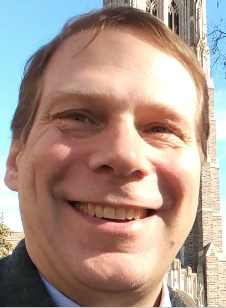Commercial Background
 After buying a
computer at age 10 and developing machine code at 14, I
earned my associate's computer engineering degree and
started my computer consultant career at 21. After buying a
computer at age 10 and developing machine code at 14, I
earned my associate's computer engineering degree and
started my computer consultant career at 21.
 Consulted for
Ericsson, GE Capital, Astra, RMT, and others in
Sweden. Consulted for
Ericsson, GE Capital, Astra, RMT, and others in
Sweden.
 Taught
Microsoft Visual Basic certification courses. Taught
Microsoft Visual Basic certification courses.
 Continued
consulting for CACI and
Crosstier/gedas in
the US. Continued
consulting for CACI and
Crosstier/gedas in
the US.
 Developing a
fascination with how the brain operates and math, I
realized that I was meant for the academic life,
accepting an offer to start a Swedish bachelors in
physics and quit my consulting career at age 31. Developing a
fascination with how the brain operates and math, I
realized that I was meant for the academic life,
accepting an offer to start a Swedish bachelors in
physics and quit my consulting career at age 31.
|
Academic Background
 Completed a
combined bachelor's and master's in Medical Physics,
including a radiation therapy license, at Stockholm University
and Karolinska Institutet. Completed a
combined bachelor's and master's in Medical Physics,
including a radiation therapy license, at Stockholm University
and Karolinska Institutet.
 Completed my
master's thesis, titled “A Comparison of Mathematical Methods
for Mass Spectrometric Medical Imaging,” under the
leadership of Professors Björn
Johansson and Martin Schalling. Completed my
master's thesis, titled “A Comparison of Mathematical Methods
for Mass Spectrometric Medical Imaging,” under the
leadership of Professors Björn
Johansson and Martin Schalling.
 Served as a
software engineer for Professor Vince
Calhoun at the Mind
Research Network (2008). Served as a
software engineer for Professor Vince
Calhoun at the Mind
Research Network (2008).
 Developed
neuroimaging software such as the Functional
Network Connectivity toolbox and the Group
InterParticipant Correlation. Developed
neuroimaging software such as the Functional
Network Connectivity toolbox and the Group
InterParticipant Correlation.
 Learned
independent component analysis (ICA). Learned
independent component analysis (ICA).
 Completed the Structural
and Computational Biology & Medical Biophysics PhD
program at Baylor
College of Medicine (2008-2014). Completed the Structural
and Computational Biology & Medical Biophysics PhD
program at Baylor
College of Medicine (2008-2014).
 Served as a
graduate student in Professor Stephen
LaConte's Lab. Served as a
graduate student in Professor Stephen
LaConte's Lab.
 Worked with
functional MRI, support vector machines, and mild
traumatic brain injuries. Worked with
functional MRI, support vector machines, and mild
traumatic brain injuries.
 Completed
dissertation: “Developing Neuroimaging Methods to
Disentangle Mild Traumatic Brain Injury.” Completed
dissertation: “Developing Neuroimaging Methods to
Disentangle Mild Traumatic Brain Injury.”
|
Recent Positions 
 Served as a
post doc fellow (2014-2017) at Walter
Reed National Military Medical Center under the
leadership of Drs. John Ollinger, Gerard Riedy, and Dominic Nathan, Served as a
post doc fellow (2014-2017) at Walter
Reed National Military Medical Center under the
leadership of Drs. John Ollinger, Gerard Riedy, and Dominic Nathan,
 Developed a
FreeSurfer method to separate an mTBI group from a
control group using cortical thinning. Developed a
FreeSurfer method to separate an mTBI group from a
control group using cortical thinning.
 Served as a
post doc fellow (2017-2018) in Noam Harel's lab at Center for Magnetic Resonance Research (CMRR) Served as a
post doc fellow (2017-2018) in Noam Harel's lab at Center for Magnetic Resonance Research (CMRR)
 Developed spatial registration software, web based WebGL interface to present neural pre-operative 3D models, and DICOM scrubbing of PHI software. Developed spatial registration software, web based WebGL interface to present neural pre-operative 3D models, and DICOM scrubbing of PHI software.
 Worked as a research scientist at RUSH Alzheimer's Disease Center in 2019, developing FSL cloud computing pipelines for diffusion tensor imaging and white matter hyperintensities. Worked as a research scientist at RUSH Alzheimer's Disease Center in 2019, developing FSL cloud computing pipelines for diffusion tensor imaging and white matter hyperintensities.
Current Position
 Serving as a post doc for Professor Edna Andrews at Duke University, working with neuroimaging, DTI and fMRI to map brain regions related with linguistic and musical skills.
Serving as a post doc for Professor Edna Andrews at Duke University, working with neuroimaging, DTI and fMRI to map brain regions related with linguistic and musical skills.
 Have combined a
regressive multivariate permutation test with support
vector regression to detect neuroimage abnormalities
related to a neurobehavioral symptom inventory. Have combined a
regressive multivariate permutation test with support
vector regression to detect neuroimage abnormalities
related to a neurobehavioral symptom inventory.
 Strong developer
in several languages and tools, including Matlab,
Python, GLM, SPSS, SPM, AFNI, FSL, Freesurfer, and
Broccoli. Strong developer
in several languages and tools, including Matlab,
Python, GLM, SPSS, SPM, AFNI, FSL, Freesurfer, and
Broccoli.
 Experienced in
real-time neuroimaging, CUDA, SUMA, R, OPENGL and DICOM. Experienced in
real-time neuroimaging, CUDA, SUMA, R, OPENGL and DICOM.
|








